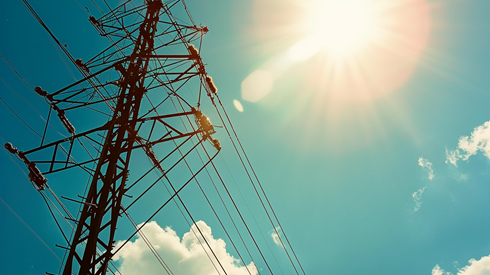The Captive Solution to Climate Risks

Alex Gedge | April 03, 2023

Editor's Note: Hylant Global Captive Solutions contributes this Thought Leadership article examining the role of captive insurance in addressing climate-related exposures.
It struck home quite literally. During a Teams chat from my UK home, the heat grew so stifling that my computer just gave up. I read the warning on the phone and guessed I had about 10 minutes remaining. Who would have thought climate change could disrupt my ability to do business?
Europe's Sahara-like summer of 2022 highlighted the emerging risks from environmental changes. Flights were canceled because airport tarmacs were engineered for less-tropical summers. Wildfires threatened homes and businesses. Work ground to a halt because of supply chain issues. Key Tier 2 suppliers' plants were inundated by a 200-year flood.
Companies are already finding themselves affected by extreme weather in ways they had not anticipated, which means dealing with new types of risks. Even the companies taking countermeasures can be tripped up when a key supplier's plant falls victim to local weather extremes. Companies focused on anticipating risks like these have found the captive insurance model an effective way to address them.
Environmental exposure really has two segments. First, there's the direct exposure to the hazard, involving coverage for the events such as flood, fire, or extreme low or high temperatures. Second is the disruption the damage causes to your normal operations such as additional increased costs of working or contractual exposures resulting from a storm that leaves you without electricity for a week.
The increasing frequency and severity of extreme weather have insurers and reinsurers scrambling to cover so many catastrophic losses. Rates and exclusions reflect what's happening in the market, and nobody should be surprised if we see a reduction in the market's capacity for environmental coverage. Companies will have to pay more money for less coverage, absorbing the additional risks (including those unforeseen).
Fortunately, organizations can use captive insurance programs to address their environmental impact liability. Through a captive, they can develop an insurance program that takes over where their existing coverage ends, packaging a variety of potential risks that might otherwise go uninsured.
As companies become more dependent on a global supply chain with critical partners, those partners' environmental risks become yours. The resulting exposure can be managed through steps to understand the exact impact on your business, and any resulting loss of income can be managed, understood, or insured through a captive.
Of course, the heart of any successful captive insurance program is access to good data. You can use a captive to address what you see as your key risk, but the critical area is making sure you understand and can capture the data around it. What exactly are your key exposures? What exact types and amounts of risk do they pose? One of the biggest challenges in addressing environmental risks is finding suitable data. The big data models that insurers and reinsurers have traditionally trusted to inform underwriting may be increasingly inaccurate in light of the effects of the changing climate.
If you haven't quantified how climate issues could impact your business, an excellent process for insuring risks while you compile that data is through what we call "loss incubation." By placing a previously uninsured risk like environmental impact liability into a captive, you'll begin to accumulate data and better understand the nature of your losses. During the first year, you might fund 100 percent of the risk. Then, based on what you've learned, in the second year you can fund 80 percent through the captive and obtain market coverage for the remaining 20 percent, 60/40 in the third, and so forth. As you become more educated and pursue strategies to mitigate these new risks, your coverage should become more precise.
Captives also offer an effective way to insure specific weather risks such as flooding. By using a parametric approach, you can tie payouts to measurable weather events. For example, if more than 200 ml of water falls in a 3-day period, there's an automatic payout with no need for a claims process. We have previously partnered with firms specializing in parametrics in some instances, such as for a captive with a key exposure tied to the potential for flooding. Sensors can be installed at key sites to monitor rainfall and potential floodwaters. The program incentivizes the sites to install effective flood defenses and adopt interventions to limit damage.
As organizations encounter new climate-fueled risks (and a host of geopolitical issues), the need for more comprehensive risk management is obvious. Using captives as a strategy for addressing risks having historically proven either uninsurable or difficult to quantify can play a vital role in protecting your organization's well-being. My laptop's inability to function in 40-degrees-Celsius heat offered but a small example of what's rapidly becoming a bigger problem for all types of companies.
Alex Gedge | April 03, 2023







